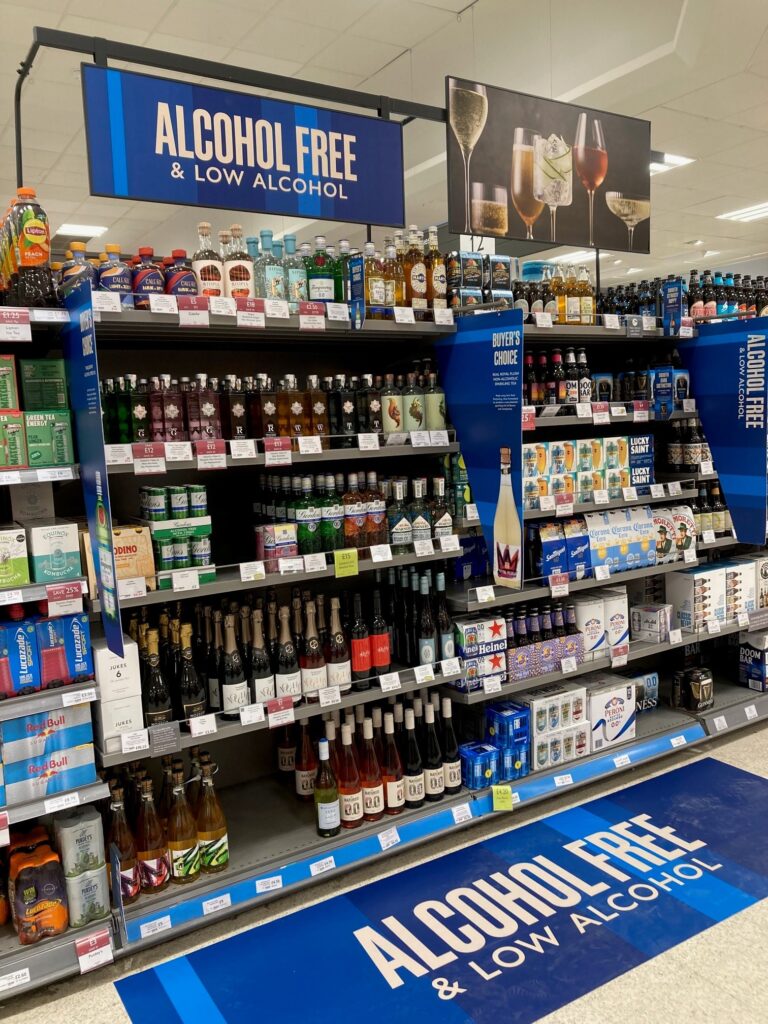Most supermarkets stock at least 10,000 different items. That’s a staggering number.
For any brand trying to maintain its position on shelf, or get listed, demonstrating understanding of the category is always key. Yet with the blurring of categories, and the emergence of new ones, additional challenges arise in merchandising, in pack design and comms.

When boundaries blur or completely new products emerge – especially in those early days when there is less understanding about what the product is - things become tricky. People don’t know how to consume it, what role the product plays, and the all important, why they should buy it.
Let’s look at the drinks category.
In the past we had alcoholic drinks and soft drinks – simple. Now we also have non-alcoholic drinks - drinks that don’t contain alcohol yet use the language and semiotics of alcohol. Many are familiar mainstream brands producing a non-alcoholic variant of a familiar product. These have been easy for people to understand as the brand does the heavy lifting. New entrants, such as Sipsmith found it more challenging as the language to describe their product didn’t exist (to be called a gin it needs to contain alcohol, which clearly Sipsmith’s nonalcoholic product didn’t). And for some, such as Botivo, they did not want to be defined as an alcohol alternative, but a drink in their own right.

Now that the category is established, in many stores, there is a separate, identifiable non-alcoholic section. The growth in brands and demand has allowed distinct shelf space to be carved out, so that it is clear to shoppers that all the products in the section are no/low alcohol. And with brands such as Gordons for gin and Heineken and Peroni for beer being clear anchors, navigation becomes easier.
In addition, non-alcohol brands such as the Clean Co. use the pack to clearly communicate what the product is. Without using the words gin or rum, shoppers know the anticipated flavour profile, simply by the different coloured glass bottles that match the dominant codes of the category e.g. green for gin, pink for pink gin. Their use of colours shows great understanding of the category and the visual cues that shoppers require.

If we move onto soft drinks, we’ve seen subcategories such as kombucha emerge and quickly become established. They naturally lean towards health benefits and functional foods so there have been questions about merchandising and the right adjacencies – especially in those early days. Should they be merchandised with other drinks? Or within a health and wellness section?

Having just got our heads around Kombucha and the associated health benefits, we now have alcoholic kombucha! So where does this fit? And where should it be in store? Is it a contradiction, bringing together alcohol with health benefits? Do they cancel each other out?
Based on the taste profile, some see it as a step on from sour beers whilst others may see it as a healthier alternative to other alcoholic drinks. It depends on your perspective. And this of course also influences what needs to be communicated on pack. Should they prioritise health benefits, or flavour? Are the consumption occasions the same?

Another area where the boundaries are becoming increasingly blurred is the intersection of food and functional ingredients. Consumers are increasingly seeking out products that not only taste great but also provide tangible health benefits. Foods are moving beyond health to offer wellbeing benefits with products being infused with everything from probiotics and adaptogens to nootropics and CBD. These "functional" products blur the line between traditional sustenance and targeted wellness solutions.
So again, with this intersection what are the benefits to communicate? What are consumers’ priorities? And what do consumers still want reassurance on? Factors like taste and sensorial cues cannot be forgotten, these are food products after all!

We know shoppers want to shop easily and smoothly. We know that they have their favourites and often shop on auto-pilot. And we know that whilst shoppers may be open to experimenting it can be difficult for brands to get on shoppers’ radar.
So here’s what we believe brands need to think about?
- Where to position the product in store. Both at a macro and micro level.
- What are the adjacencies? Are there complementary products to partner with?
- What should be communicated on pack? What differentiates your product? And what wider category codes and messages/imagery are still required?
- How can you communicate and stand out in-store – e.g. use of barkers, framing of products on shelf.
- How do you reach and educate people before they hit the store so people understand what your product is and why they should choose it?
Categories are not static and neither should we be. We need one eye on the past and the other on the future to unlock opportunities.
Uncover deeper truths. Talk to Hummingbird Insights

